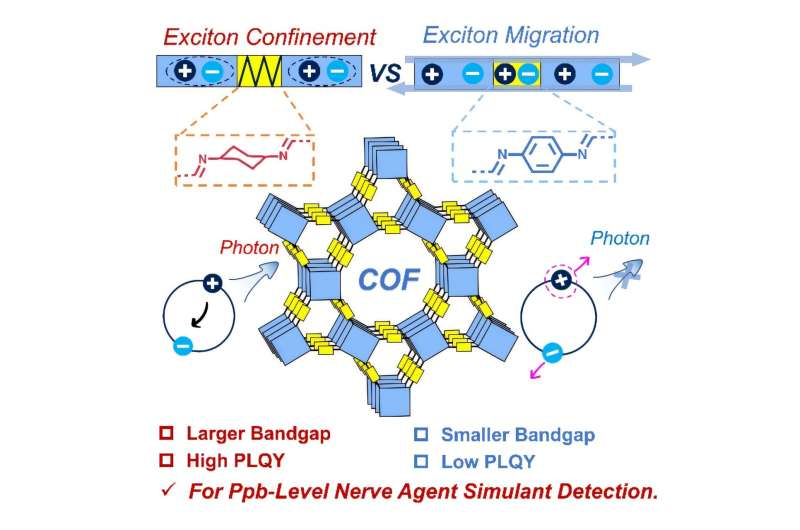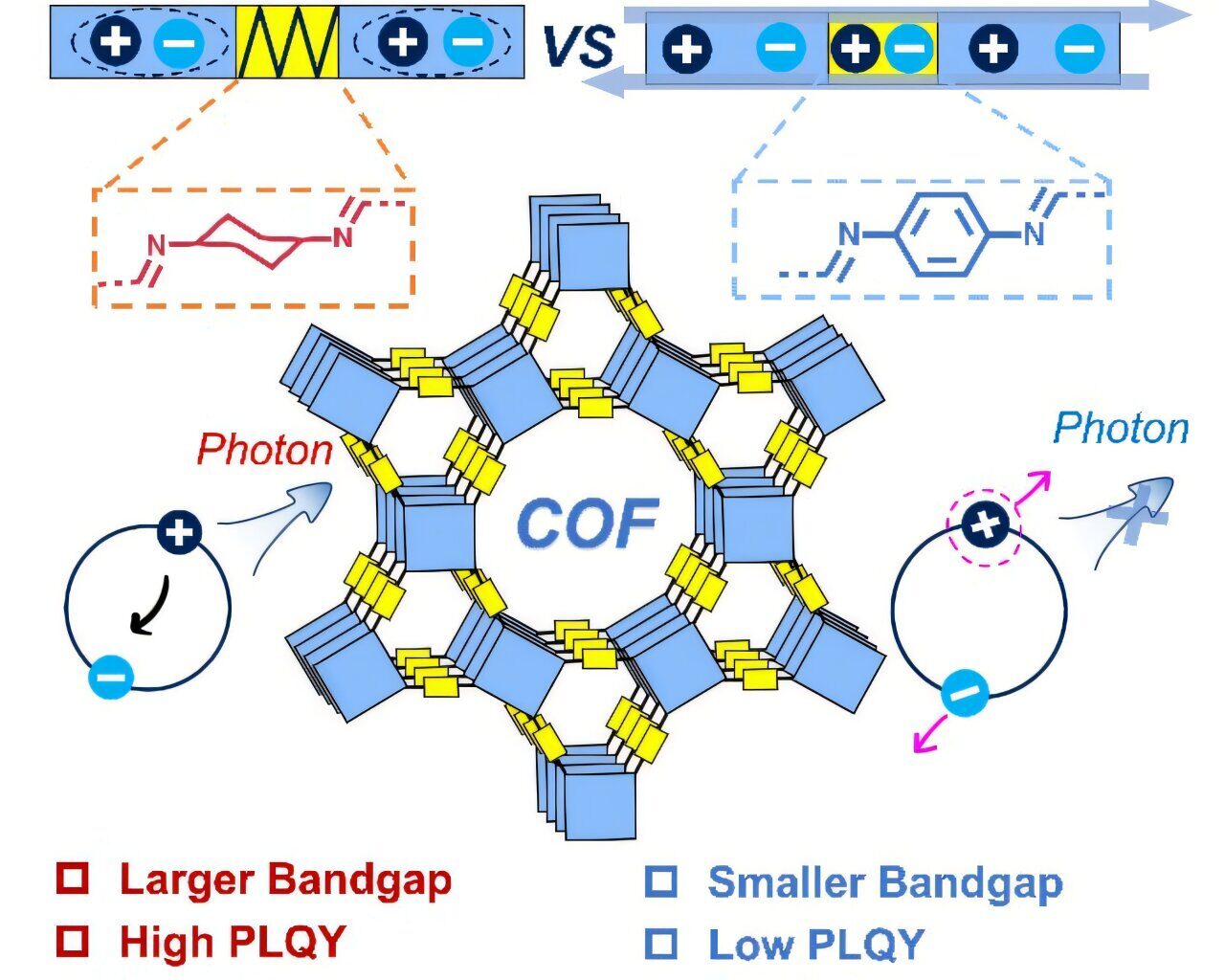
Schematic illustration of the exciton confinement in cyclohexane-linked COF. Credit: Prof. Dou’s group / Chinese Academy of Sciences
Quantum confinement is a physical effect that occurs when the size of a material—usually a semiconductor or conductor—is reduced to the nanoscale, thereby restricting the movement of electrons or holes.
This is useful because confinement of electrons to very small spaces causes their energy levels to become discrete rather than continuous, altering the material’s electronic and optical properties.
For example, the photoluminescence (PL) performance of semiconductors can be improved by reducing their size or effective conjugation length—the distance across which π-electrons can move freely through a system of single and double bonds—to form quantum dots. These dots, such as graphene, carbon, and polymer quantum dots, exhibit the quantum confinement effect.
While quantum confinement has long been achieved by reducing the physical size of materials, Chinese researchers have now demonstrated the phenomenon for the first time by modulating the radius of an exciton—a bound electron–hole quasiparticle—without shrinking the material itself.
This accomplishment, reported in Cell Reports Physical Science, marks the first time quantum confinement has been achieved without physical downsizing.
To achieve this breakthrough, a team led by Prof. DOU Xincun at the Xinjiang Technical Institute of Physics and Chemistry of the Chinese Academy of Sciences synthesized a new covalent organic framework (COF)—a crystalline material made of a light element such as carbon, hydrogen, nitrogen, or oxygen, which can be customized at the molecular level.

Timeline of imine-based COFs and their corresponding photoluminescent performance. Credit: Prof. Dou’s group / Chinese Academy of Sciences
Using the new COF—dubbed the trans-1,4-diaminocyclohexane (tDACH)—the researchers inserted cyclohexane-based linkers as conjugation “breakpoints,” thereby engineering π-conjugated domains that enable intrinsic exciton confinement at the molecular scale.
The new COF exhibited exceptional PL properties, with a PL quantum yield of 73%—outperforming all previously reported imine-based COFs.
Analysis revealed that tDACH-COF lacks long-range π-conjugation, effectively restricting exciton diffusion and migration. The excitons remain localized within the material’s building blocks and recombine radiatively, resulting in strong PL performance. This confirms that quantum confinement indeed occurred in the COF without requiring physical downsizing.
Leveraging these unique properties, the team developed tDACH-COF into a PL probe capable of detecting nerve agent simulants at parts-per-billion levels. This application capitalizes on efficient PL quenching triggered by imine protonation. Transient spectroscopy studies further showed that imine protonation disrupts the inherent quantum confinement, leading to significant PL quenching.
The findings bridge a critical gap between COFs and commercial PL materials, paving the way for COFs to be used in lighting devices, optoelectronic equipment, and chemical sensors.
More information:
Achieving Quantum Confinement Effect in Covalent Organic Frameworks for High Photoluminescence, Cell Reports Physical Science (2025). DOI: 10.1016/j.xcrp.2025.102721.
Provided by
Chinese Academy of Sciences
Citation:
First quantum confinement achieved without physical downsizing (2025, July 23)
retrieved 24 July 2025
from https://phys.org/news/2025-07-quantum-confinement-physical-downsizing.html
This document is subject to copyright. Apart from any fair dealing for the purpose of private study or research, no
part may be reproduced without the written permission. The content is provided for information purposes only.
